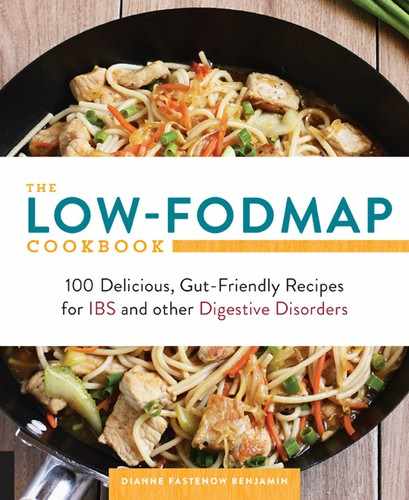INTRODUCTION

My passion for food began when I was about eight or nine years old. I had a Better Homes and Gardens kids’ cookbook that I loved: My mom taught me how to follow the recipes, and my friends and I baked and baked—and baked some more. I’ve got vivid memories of making treats like snickerdoodles, yellow cake with chocolate frosting, and caramel corn. (That caramel corn was so good that my dad still talks about it to this day!)
We don’t have any chefs or restaurateurs in our family—unless you count my great-great-grandfather, who was a baker—but food has always been a big part of our lives. After my husband and I got married, we noticed a major difference in our respective families. When we get together with his family, the question on everyone’s lips is, “What are we doing today?” But when we get together with my family, everyone asks, “What are we eating today?” Food is truly the main event: Vacations, holidays, and birthdays are always centered around where—and what—we’re going to eat. So it’s no surprise that I’ve been collecting and creating recipes almost obsessively since I was a teenager or that I love to share recipes that I’ve tried and created on my blog, Delicious as it Looks (www.deliciousasitlooks.com). I started Delicious as it Looks in 2010, after I discovered my talent for photographing food. I was still eating like an average person back then; but while I tried to eat as healthfully and naturally as possible, my digestive system was a mess.
I was diagnosed with irritable bowel syndrome (IBS) almost twenty years ago. Symptoms would come and go: Sometimes I’d feel okay, but the rest of the time I felt like there was something seriously wrong with me. Finally, after all my tests came back normal, I got the IBS diagnosis. I continued to suffer until I finally took matters into my own hands and began researching how diet affects IBS. That was nothing new for me: I’ve been interested in health and nutrition since I lost fifty pounds as a teenager by counting calories, exercising, and using diet tips gleaned from women’s magazines, so taking the initiative and researching diets and digestive issues felt like a natural extension of that curiosity.
At last I landed on the low-FODMAP diet, which completely changed my life. Suddenly, everything made sense. The foods I was eating were actually causing my symptoms! It was a revelation at the time, but looking back, it seems so obvious. So why did I have to figure this out all by myself? The answer is simple: I was diagnosed before anyone had even heard of FODMAPs. And that means I missed out. (These days, I hope IBS sufferers will learn about FODMAPs from their doctors when they’re diagnosed.)
And, of course, adopting a low-FODMAP diet posed a challenge for my blog. “Now what?” I thought. “I can’t eat anything!” But it wasn’t long before I made the decision to stay positive and to focus on all of the foods I can eat. After that, I started developing recipes that use low-FODMAP ingredients and sharing them on my blog. If you look through my blog’s archives, you’ll see how I transitioned from a “normal” diet to a low-FODMAP one (and how I dabbled in a grain-free diet for a while en route). It’s been such an interesting and enjoyable experience, and the best part is that my experience—and my recipes—have helped so many people.
It’s my hope that this book will help you, too. It will show you how to make 100 low-FODMAP recipes, everything from hearty stews to healthy pasta dishes to decadent chocolate chip cookies. I’m confident it will prove that eating low-FODMAP is anything but boring! Also, as you’ll see, lots of these recipes can easily be made vegan with just a couple of simple substitutions and many of them are gluten-free, too.
Let’s get started!
—Dianne Fastenow Benjamin
